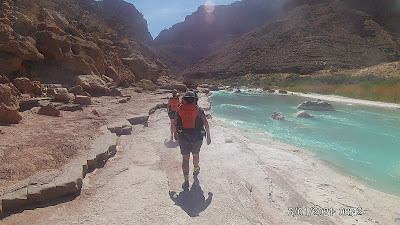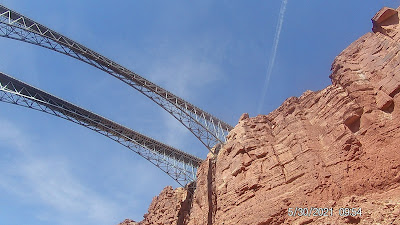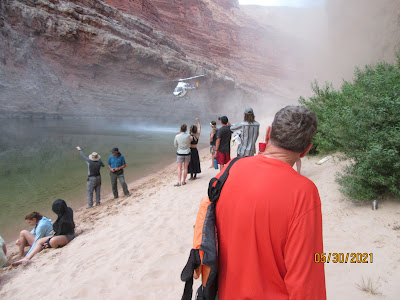Day 4 is swap out day. We change rafts so Will can drop off the people hiking out and pick up the people hiking in. It takes a while for the swap and we have time to hike to Phantom Ranch. The pilots are in communication as to the status of the hikers hiking the Bright Angel Trail, The $5 dollar lemonade at Phantom Ranch was well worth the money.
As we attempt to back away from Phantom Ranch the NPS rangers request our assistance in a raft accident. They need us to take a repairman and pilot with supplies down river to repair a raft and assist in piloting the raft out of the canyon.
NPS picks up two individuals from Flagstaff and fly's them with equipment to Phantom Ranch for transport on our raft. The crew arrives with two wheel barrels of equipment for repairs.
Since we switched rafts, JJ is our new pilot and is ready to assist. JJ is a solid 5'2" ball of TNT.
We finally arrive at the accident site and look over the situation. We deliver the repairman and pilot. The repairman says it will take two days to complete the repairs before they can continue. They thank us for a job well done!
If you click on the photo you can see Oliver and Morgan, the two crewmembers assisting Pilots Will and JJ, trying to find a good support for holding the rafts. We were amazed at their climbing abilities.
Our next stop is a waterfall . You can see the walk is along a creek bed.
They finally reach the end of the hike and everyone take a turn under the waterfall.
A video of the waterfall.
Our camp for night 4. Before we can get our tent, sleeping pad and large dry bag, we have to form a line and off load all the cooking equipment and tables, This is a tedious task and requires many people to complete. The beaches are sandy and hard to walk on.
End of Day 4






































